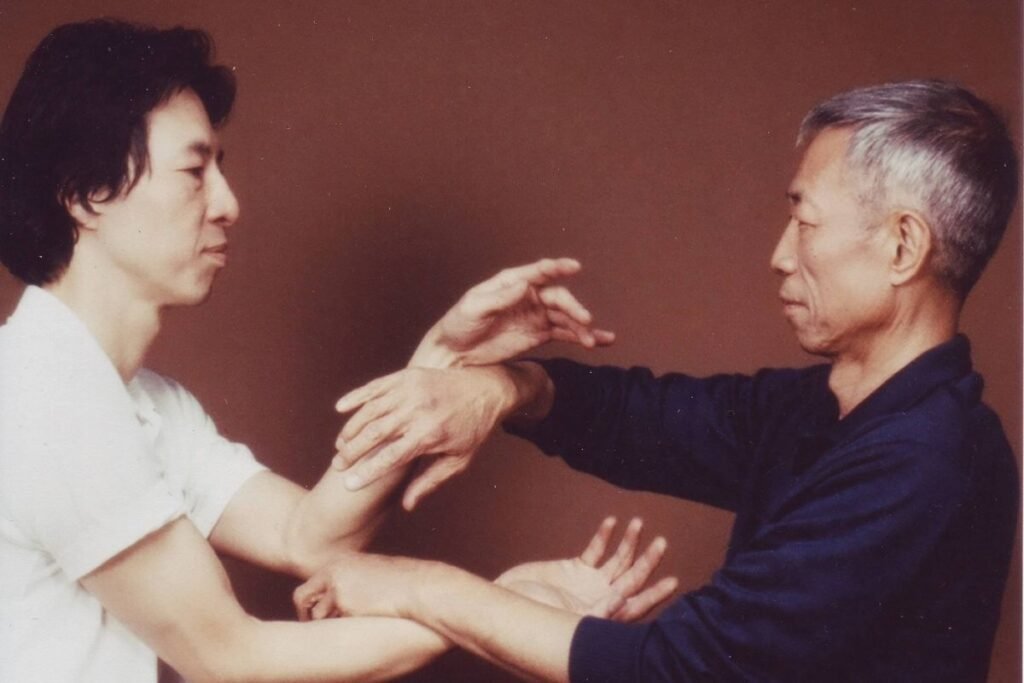Wing Chun is a martial arts system rather than a “style”. The word “style” implies that practitioners are only copying a series of movements that are in-built through mechanical repetition, whereas the word “system” implies that there’s a set of principles behind the way the movements are carried out. The principles of Wing Chun turn it into an extremely effective system of self-defence as well as method for promoting a balanced body and mind.
Since our system is based on a logical and comprehensive set of principles, we can integrate these beneficial philosophies in all our daily activities, making the art of Wing Chun, a way of living!

Mindfulness and Concentration
Wing Chun is a perfect tool for both mental and physical training. It requires constant awareness of our association with gravity (balance) as well as the ‘method’ of movement; constructive change can only occur once a certain level of mindfulness has been accomplished. Therefore, the focus should always remain on the present moment, not on the end result. In order to concentrate effectively we must be relaxed, both mentally and physically!
It’s through this principle of our Wing Chun system that we learn to distinguish and choose a more mindful way to live. Instead of suffering from unnecessary stress, the primary cause of which is a lack of awareness in the present moment.
Balance and Alignment
Balance is our relationship to the earth’s gravitational pull. Only within true balance can we actually begin to relax and ‘let go’ of our pain-related muscular tension. Wing Chun practitioners learn to mindfully align the body versus gravity, which is an important aspect of effortless generation of power.
They are encouraged to understand true balance and develop correct skeletal alignment. Not only during their Wing Chun practice, but throughout the whole body regardless of the posture or activity.
Through this understanding and application of balance and alignment, we can learn to correct our postural imbalances and misalignments. Which leads to relieving related pain, and generally being able to utilize body in the most efficient way possible.
Relaxation and Minimum Use of Brute Strength
This is an astonishing principle of our system! It’s the incredible trait of Grandmaster Chu Shong Tin’s Wing Chun. It’s the reason that even at the age of 80 he was able to produce gigantic power in any movement, and with such ease.
Through deep and ‘active’ relaxation we are able to tap into the mass of our body and can use it in a united way. If we look at it through the equation of f=ma (Force = Mass x Acceleration), a 50kg woman can co-ordinate 25kg behind her movement. Add speed, she can produce a lot of power. Whereas, if a man weighs 80kg but his body is jammed up with tension, he can only use the weight of his arm behind his movement. He won’t be able to acquire the same amount of force.
The principles of Wing Chun are hard to grasp until you feel it for yourself in your own body. It’s truly extraordinary, and people are usually wowed when they experience this ‘effortless power’ for the first time. This is the very reason that the Mindful Wing Chun founder, Nima King, first moved to Hong Kong after being on the receiving end of this kind of power from Grandmaster Chu!
Once we learn and practise this principle, we can adopt this method of effortless movement in our daily lives. Leading to more proficient movement in all our activities, whether that’s sitting, standing, walking, lifting objects or playing sport. This principle, again, naturally leads to fewer injuries and faster, more effective pain relief.
Directness and Economy of Movement
Wing Chun makes use of the fact that the most direct path between two points is a straight line. Thus, the attack and defence movements in Wing Chun all travel down the ‘centreline’, the space, or line, between the centre of two people. This principle also adds great speed to all our movements, because we’re taking the most efficient path to the target.
Another element of this principle is the ability to defend while simultaneously attacking. This is a unique attribute of our method of Wing Chun as compared with other general methods of Wing Chun and other martial art forms.
In other styles, the practitioner usually defends an incoming strike by either blocking it or moving out of its way and then throwing a counterstrike. However, in this system of self-defence we learn to defend the incoming strike by actually striking straight through it! Applying this principle enables us to spar confidently with opponents practising any style of martial art. Furthermore, still be able to control the situation spontaneously without using any predetermined techniques.
Again, this is another one of those things which, without first-hand experience, is hard to understand or to even find believable. Nonetheless, it is a very real ability that can be attained by anyone, given the correct practice and persistent practice.
Simplicity and Practicality
The movements of Wing Chun are simple and based on natural body movements.
They’re easy to learn and apply because they’re not unnecessarily flowery, difficult or contorted. The practicality principle enables us to use our self-defense skills in confined spaces, such as staircases and elevators.
That means people of any gender, age, size or body type can do Wing Chun effectively. Without prior experience in sports, fitness training or other martial arts. This is the possibility when practicing this art and literally thousands of people have realized this through the practice. However, as with any other thing, to obtain a workable level, it does require persistent and continual training.
When it comes to practice, we reap what we sow, and there’s no way of going around that! Having said this, we wholeheartedly believe that this system of martial art is the most effective and efficient for realistic self-defense!
